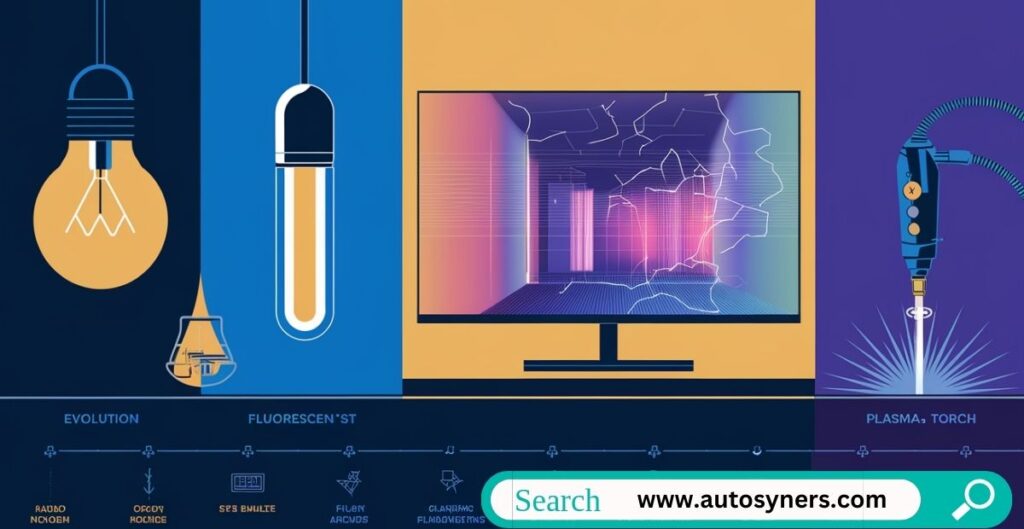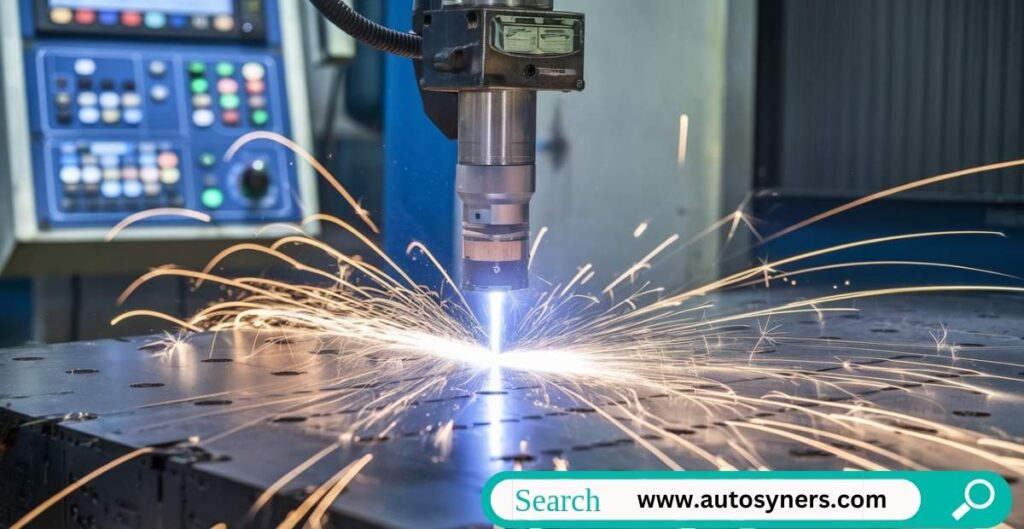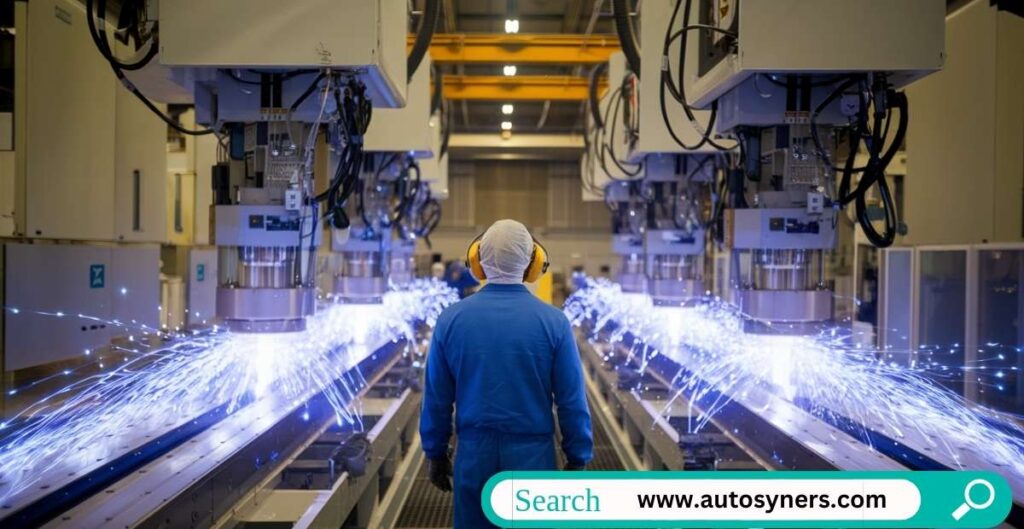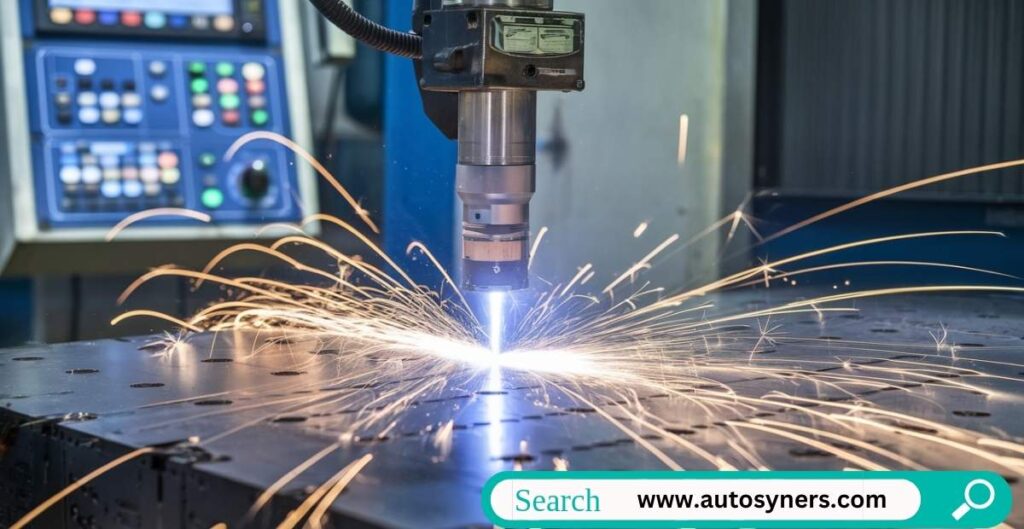1. Introduction
Imagine a technology so powerful it harnesses temperatures hotter than the surface of the sun to slice through metal with incredible precision. This is plasma arc machining (PAM), a revolutionary manufacturing process that has transformed how industries approach metal cutting and shaping. Since its development in the 1950s, plasma arc machining process has evolved from an experimental technique into a cornerstone of modern manufacturing, offering unprecedented capabilities in metal fabrication and processing.
1.1 Evolution of Plasma Technology
plasma arc machining process emerged in the 1950s as a breakthrough in metal cutting technology. Initially developed for specialized aerospace applications, it has evolved into a versatile manufacturing process used across multiple industries.

1.2 Significance in Modern Manufacturing
PAM has become indispensable in modern manufacturing due to its ability to cut thick materials rapidly and precisely, particularly in automated production environments.
2. The Science Behind Plasma
Plasma exists in a realm beyond the familiar states of solid, liquid, and gas. When gas is heated to temperatures exceeding 30,000°C, electrons break free from their atomic bonds, creating a highly energetic and electrically conductive state of matter. This unique characteristic makes plasma ideal for cutting applications, as it combines intense heat with electrical conductivity. Unlike other states of matter, plasma responds dramatically to both electric and magnetic fields, allowing for precise control in industrial applications.
The behavior of plasma in industrial settings differs significantly from natural plasma found in stars or lightning. Industrial plasma is carefully contained and directed, utilizing specific gases and electrical currents to maintain stable, controlled conditions. This controlled environment enables precise cutting operations while managing the intense heat and energy involved in the process.
2.1 Understanding the Fourth State of Matter

2.1.1 Physical Properties
Plasma exists beyond solid, liquid, and gas states, consisting of ionized particles that conduct electricity and respond to magnetic fields. At temperatures exceeding 30,000°C, electrons break free from atomic bonds.
2.1.2 Ionization Process
Gas molecules become ionized through electrical discharge, creating a highly energetic state capable of cutting through conductive materials.
2.2 Industrial Plasma Generation
Creating and maintaining plasma for industrial use involves a sophisticated process of gas ionization through electrical discharge. The process begins with common gases like nitrogen, oxygen, or argon, which are forced through a small nozzle while an electrical arc is established between an electrode and the workpiece. This combination of confined space, electrical energy, and gas flow creates a high-temperature plasma jet capable of cutting through conductive materials.
The key to effective plasma generation lies in the careful balance of gas flow, electrical current, and nozzle design. Modern systems use advanced power supplies that can deliver precise amounts of electrical energy, while sophisticated gas delivery systems ensure consistent flow rates and proper gas mixtures. This level of control allows for optimal plasma formation and maintenance throughout the cutting process.
2.2.1 Gas Selection
Primary gases include nitrogen, oxygen, and argon, chosen based on material type and desired cut quality. Secondary shielding gases protect the cut zone from contamination.
2.2.2 Energy Requirements
Modern systems utilize DC power supplies delivering 100-1000 amperes at 100-400 volts, with sophisticated control systems maintaining stable arc conditions.
3. Core Components
3.1 Plasma Torch/Gun

The plasma torch stands as the heart of the PAM system, incorporating several crucial elements that work in harmony to generate and control the plasma arc. At its core, the torch contains a tungsten electrode that serves as the cathode, carefully positioned within a water-cooled copper nozzle that acts as the anode. This design allows for the creation of a constricted arc that concentrates enormous amounts of energy into a precise cutting beam.
The torch’s design incorporates sophisticated cooling channels that prevent component degradation under extreme temperatures. Advanced models feature dual-flow systems that separate the plasma-forming gas from a secondary shielding gas, enhancing cut quality and extending consumable life. The nozzle’s geometry plays a crucial role in focusing the plasma jet and determining cut characteristics.
3.1.1 Design Elements
- Tungsten electrode (cathode)
- Water-cooled copper nozzle (anode)
- Precision gas channels
- Advanced cooling systems
3.1.2 Component Functions
- Arc initiation and maintenance
- Gas flow control
- Heat management
- Plasma jet focusing
3.2 Power Supply System
Modern PAM systems rely on highly regulated DC power supplies capable of delivering currents ranging from 100 to 1000 amperes at voltages between 100 to 400 volts. These power supplies incorporate advanced control systems that can maintain stable arc conditions while adjusting to varying cutting requirements. The system must manage both the initial high-frequency arc starting phase and the sustained cutting phase, requiring sophisticated electronic control circuits.
3.2.1 Electrical Requirements
Power supplies in PAM systems deliver precisely controlled DC current through sophisticated electronic circuits. These units typically provide 100-1000 amperes at voltages between 100-400 volts, with advanced feedback systems maintaining arc stability. Digital controls enable real-time adjustments based on cutting conditions and material requirements.
3.2.2 Control Mechanisms
Modern control systems integrate multiple feedback loops monitoring current, voltage, and arc characteristics. Microprocessor-based controllers adjust power output within milliseconds, ensuring consistent cut quality. The system manages both the high-frequency starting phase and sustained cutting operations through specialized circuitry.
3.3 Gas Supply System
The gas supply system forms a critical component of plasma arc machining process, orchestrating the precise delivery of both primary plasma gases and secondary shielding gases. Primary gases like nitrogen, oxygen, or argon are carefully selected based on the material being cut and desired cut quality. These gases undergo ionization to form the plasma jet. The secondary shielding gases, which might include nitrogen, air, or gas mixtures, protect the cut zone from atmospheric contamination and help constrict the plasma arc for better cut quality.
Modern gas supply systems feature advanced flow controls and mixing capabilities that allow for real-time adjustments during operation. Digital flow meters and pressure sensors ensure consistent gas delivery, while automated controls maintain optimal gas ratios throughout the cutting process. This precision in gas management directly impacts cut quality, kerf width, and overall process efficiency.
3.3.1 Primary Gases
Primary plasma gases serve as the foundation of the cutting process. Nitrogen offers excellent cut quality on most materials, while oxygen enhances cutting speed on carbon steel. Argon-hydrogen mixtures provide superior results on stainless steel and aluminum. Digital flow controllers maintain precise gas ratios and pressure levels throughout operation.
3.3.2 Secondary Shielding
Secondary shielding gases protect the cut zone from atmospheric contamination while enhancing cut quality. These gases, often nitrogen or CO2, create a protective envelope around the plasma jet. Advanced systems feature dual-flow technology, separately controlling plasma and shield gas flows for optimal performance.
4. Working Principle
plasma arc machining process operates through a sophisticated interplay of electrical, thermal, and fluid dynamics principles. The process begins when an electrical arc forms between the electrode and workpiece. As gas flows through this arc, it becomes ionized, creating plasma. This plasma jet, constricted by the nozzle, accelerates to speeds approaching 1,500 meters per second while reaching temperatures that can exceed 20,000°C.
The material removal process occurs through a combination of thermal melting and high-velocity kinetic energy. The intense heat melts the material, while the high-velocity plasma jet physically blows the molten material away from the cut zone. This combination results in a clean, precise cut with minimal distortion in the surrounding material.
4.1 Arc Formation

Arc formation begins with a high-frequency spark that ionizes the initial gas path. The pilot arc forms between electrode and nozzle before transferring to the workpiece. This transferred arc creates the primary plasma jet, with temperatures reaching 20,000°C at the core.
4.2 Material Removal Process
Material removal combines thermal melting with kinetic energy from the high-velocity plasma jet. The intense heat liquefies the material while the accelerated plasma, reaching speeds of 1,500 meters per second, expels molten material from the cut zone. This dual-action process enables clean, precise cuts.
4.3 Process Parameters
Critical parameters include:
- Stand-off distance between torch and workpiece
- Cutting speed optimization for material thickness
- Gas pressure and flow rate adjustments
- Current and voltage settings
- Nozzle size selection based on application
5. Industrial Applications
plasma arc machining process has revolutionized numerous industries with its versatility and efficiency. In automotive manufacturing, PAM systems handle everything from cutting chassis components to creating intricate body panels. The aerospace industry relies heavily on PAM for processing titanium alloys and other high-performance materials used in aircraft components. Shipbuilding operations utilize large-scale PAM systems for cutting thick steel plates with remarkable precision.
The construction industry benefits from PAM’s ability to process structural steel quickly and accurately, while general fabrication shops appreciate its flexibility in handling various materials and thicknesses. Modern CNC-controlled PAM systems enable complex cutting patterns and automated operations, making them invaluable in high-volume production environments.
5.1 Manufacturing Sectors

5.1.1 Automotive
Automotive manufacturers utilize PAM for chassis components, body panels, and structural elements. The process excels in cutting various steel grades and aluminum alloys common in vehicle production. Automated systems enable high-volume production with consistent quality.
5.1.2 Aerospace
Aerospace applications demand precise cutting of high-performance materials. PAM effectively processes titanium alloys, heat-resistant superalloys, and thick aluminum sections. The technology proves particularly valuable in manufacturing engine components and structural elements.
5.1.3 Shipbuilding
Shipbuilding operations rely on PAM for processing thick steel plates and complex structural components. Systems handle materials up to 150mm thick, offering significant speed advantages over traditional cutting methods. CNC-controlled systems enable precise cutting of complex shapes required for hull construction.
5.2 Material Compatibility
PAM exhibits exceptional versatility in material processing capabilities. It excels at cutting conductive metals including mild steel, stainless steel, aluminum, copper, and their alloys. The process can handle material thicknesses ranging from thin sheets to plates exceeding 150mm, though optimal cut quality varies with material type and thickness.
Surface finish quality depends largely on cutting parameters and material properties. Modern PAM systems can achieve cut quality ratings that meet ISO 9013 standards, with minimal dross formation and tight dimensional tolerances. However, certain materials may require specific gas combinations or cutting parameters to achieve optimal results.
5.2.1 Suitable Materials
PAM effectively cuts conductive metals including:
- Carbon and alloy steels
- Stainless steel grades
- Aluminum alloys
- Copper and brass
- Nickel-based alloys
- Titanium
5.2.2 Thickness Considerations
Material thickness capabilities range from 0.5mm to over 150mm, with optimal performance varying by material. Cutting speed and quality depend on:
- Material conductivity
- Thermal properties
- Surface conditions
- Required edge quality
6. Process Analysis

6.1 Advantages
6.1.1 Speed and Precision
PAM achieves cutting speeds up to six times faster than oxyfuel for materials under 50mm. Modern systems maintain positioning accuracy within ±0.1mm, enabling precise component fabrication. High-speed capability particularly benefits thick material processing.
6.1.2 Cost Benefits
Despite initial investment costs, PAM offers significant economic advantages:
- Reduced operating costs per cut
- High productivity rates
- Minimal material waste
- Lower labor costs through automation
- Extended consumable life with modern systems
6.2 Limitations
6.2.1 Technical Constraints
Key limitations include:
- Heat affected zone formation
- Edge squareness variations
- Minimum hole size restrictions
- Surface finish variations
- Kerf width control challenges
6.2.2 Operational Challenges
Operational considerations encompass:
- High power consumption
- Consumable replacement costs
- Noise generation
- UV radiation exposure
- Fume management requirements
7. Safety and Best Practices
Successful PAM operation demands adherence to established best practices. Proper machine setup includes careful alignment of the torch, correct selection of consumables, and optimization of cutting parameters based on material type and thickness. Regular maintenance schedules must address consumable replacement, alignment checks, and system calibration.
Quality control measures should include regular inspection of cut quality, monitoring of consumable wear, and validation of dimensional accuracy. Process optimization often involves fine-tuning parameters such as cutting speed, arc voltage, and gas flow rates to achieve optimal results for specific applications.
Safety Protocols
Safety in PAM operations requires a comprehensive approach addressing multiple hazards. Operators must wear appropriate personal protective equipment including flame-resistant clothing, UV-protective eyewear, and hearing protection. Workspace requirements include proper ventilation systems capable of removing metal fumes and particulates, as well as appropriate electrical safety measures.
Emergency procedures must be clearly defined and regularly practiced, including protocols for power shutdown, fire response, and medical emergencies. Modern systems incorporate multiple safety interlocks and emergency stops, but proper training remains essential for safe operation.
7.1 Operating Guidelines
7.1.1 Setup Procedures
Standard setup protocol requires:
- Equipment calibration verification
- Consumable condition inspection
- Parameter optimization for material type
- Test cuts on scrap material
- System alignment checks
7.1.2 Maintenance Requirements
Regular maintenance ensures optimal performance:
- Daily consumable inspections
- Weekly cooling system checks
- Monthly calibration verification
- Quarterly power supply testing
- Annual comprehensive system review
7.2 Safety Protocols
7.2.1 Personal Protection
Essential PPE includes:
- UV-protective face shields
- Fire-resistant clothing
- Noise protection equipment
- Respiratory protection
- Heat-resistant gloves
7.2.2 Workplace Safety
Facility requirements:
- Fume extraction systems
- Fire suppression equipment
- Emergency shutdown systems
- Proper electrical grounding
- Non-reflective surfaces
8. Future Developments

8.1 Technological Advancements
Emerging technologies include:
- AI-driven process optimization
- Real-time quality monitoring systems
- Advanced plasma gas mixtures
- Improved nozzle designs
- Smart maintenance systems
8.2 Industry Trends
Current trends focus on:
- Integration with Industry 4.0
- Environmental impact reduction
- Energy efficiency improvements
- Automated material handling
- Remote operation capabilities
9. FAQs
9.1 Technical Questions
Common technical inquiries address:
- Optimal cutting parameters
- Material compatibility
- Equipment specifications
- Process troubleshooting
- Performance optimization
9.2 Operational Queries
Frequent operational questions cover:
- Maintenance schedules
- Cost considerations
- Production planning
- Quality control measures
- System upgrades
9.3 Safety Concerns
Key safety topics include:
- Emergency procedures
- Environmental controls
- Health hazards
- Protective measures
- Regulatory compliance
10. Conclusion
plasma arc machining process represents a crucial technology in modern manufacturing, offering a powerful combination of speed, precision, and versatility. While challenges exist, ongoing technological advances continue to expand its capabilities and applications. As industry demands for precision cutting of ever-more challenging materials increase, PAM will likely remain at the forefront of thermal cutting technologies.
The future of PAM lies in smarter, more efficient systems that offer enhanced precision while minimizing environmental impact. For manufacturers considering thermal cutting options, PAM offers a compelling solution that balances performance with cost-effectiveness. As we look toward future developments, plasma arc machining stands ready to evolve with industry needs, incorporating new technologies and capabilities to maintain its position as a cornerstone of modern manufacturing.
10.1 Summary of Key Points
PAM continues evolving as a critical manufacturing technology, offering:
- High-speed cutting capabilities
- Precision material processing
- Cost-effective operation
- Wide material compatibility
- Automation potential
10.2 Future Outlook
The future of PAM promises:
- Enhanced precision through AI
- Improved environmental performance
- Greater automation integration
- Expanded material capabilities
- Reduced operating costs
I am Sam Cooper, a blogger and the founder of AutoSyners, where I combine my digital marketing expertise with a passion for all things automotive. I’m dedicated to creating engaging, reliable resources for car enthusiasts, empowering readers to make informed decisions and fuel their passion for vehicles.


Pingback: Choosing Between Mevotech and Moog: A Comparative Analysis of Suspension Parts - autosyners.com